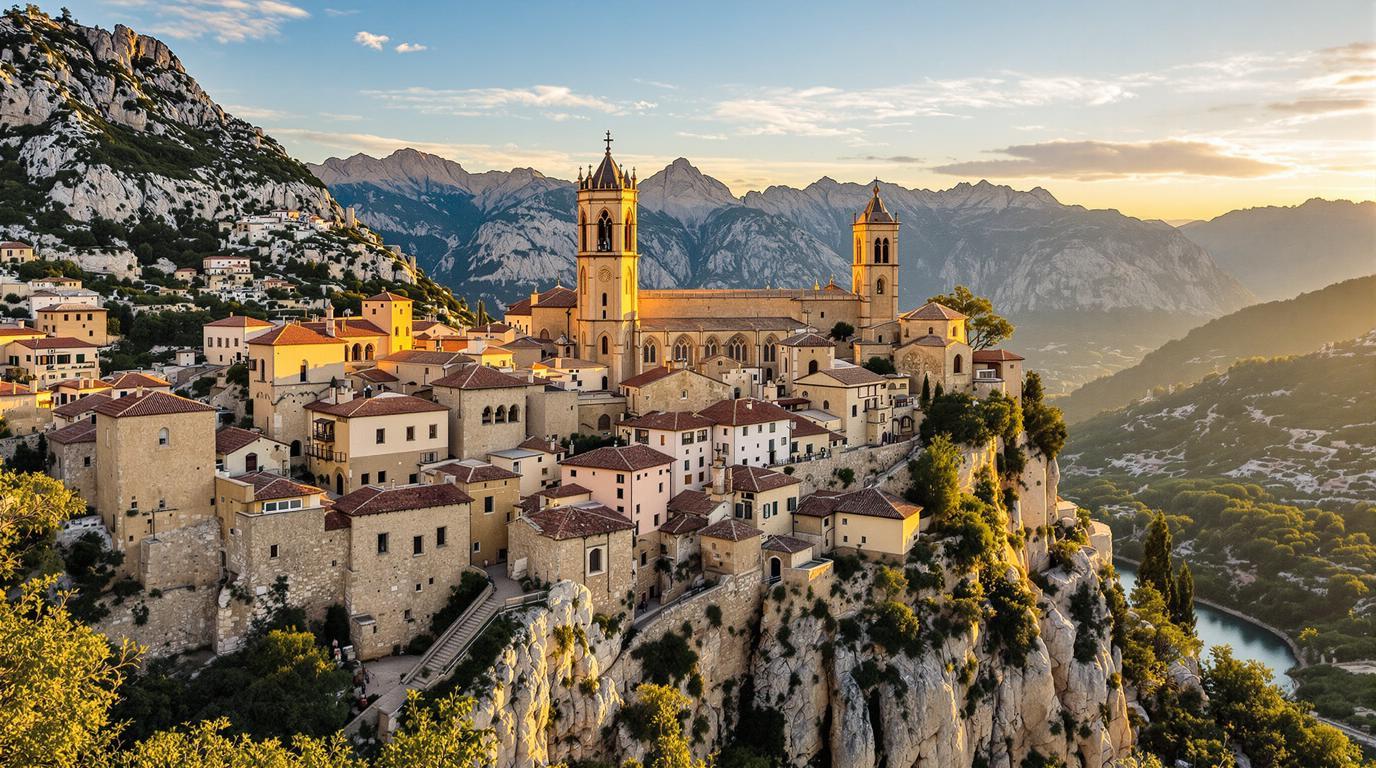In a region where history whispers through ancient stone walls, Talarn stands as an authentic slice of Catalan life. This medieval gem in Spain’s Lleida province offers something increasingly rare in our fast-paced world: a genuine step back in time where traditions remain untouched by mass tourism.
A fortress village suspended in time
Perched dramatically on a rocky promontory overlooking the serene waters of the Sant Antoni reservoir, Talarn’s silhouette tells stories spanning a millennium. Its strategic position made it an important defensive outpost during medieval times, and today, the winding cobblestone streets reveal layers of history with each step.
“Our village has witnessed the rise and fall of empires, yet somehow maintained its soul,” explains Maria Pujol, a local historian whose family has lived in Talarn for seven generations. “The stones here remember more than any history book could tell you.”
Where natural beauty frames human history
The surrounding landscape offers a stunning backdrop to Talarn’s historical tapestry. The Pyrenees mountains create a distant, snow-capped horizon during winter months, while the Mediterranean climate nurtures olive groves that have produced liquid gold for centuries.
Hiking trails from the village lead to panoramic viewpoints where you can capture the dramatic meeting of mountains and water. The Sant Antoni reservoir, created in the 1950s, adds a shimmering blue contrast to the earthy tones of the village and its surroundings.
A culinary heritage preserved through generations
Like other historic Catalan villages, Talarn’s identity is deeply rooted in its culinary traditions. At Cafè de la Plaça in the town square, locals gather to enjoy traditional dishes like trinxat (cabbage and potato hash with crispy bacon) and cargols a la llauna (snails cooked with garlic and olive oil).
“We cook the same way our great-grandmothers did,” says Josep Castellà, chef and owner. “Simple ingredients treated with respect—that’s the secret behind Catalan cooking.”
The hidden architectural treasures few visitors discover
What makes Talarn special is how it preserves its architectural heritage without fanfare. The 12th-century Church of Sant Martí anchors the village with its Romanesque bell tower. Inside, ancient frescoes depict biblical scenes with distinctly Catalan features—evidence of how local artists interpreted religious themes through their cultural lens.
The narrow streets reveal architectural surprises around every corner: stone doorways carved with family crests, Gothic windows, and hidden courtyards where time seems truly suspended.
A cultural crossroads worth exploring
Talarn’s significance stretches beyond its boundaries. The village serves as an excellent base for exploring the broader Pallars region, where forgotten towns preserve unique Catalan traditions seldom experienced by international visitors.
During summer festivals, the village plaza transforms into a vibrant celebration of Catalan culture, with sardana dancing, traditional music, and local wine flowing freely under star-filled skies.
Where to stay: authentic experiences beyond hotel walls
While Talarn offers a limited selection of accommodations, nearby options range from rustic farmhouses to boutique hotels. For those seeking an immersive experience, Cal Josep offers renovated medieval apartments within the village walls, allowing visitors to live temporarily as locals have for centuries.
Unlike Spain’s more diverse island destinations, Talarn offers singular focus: authentic Catalan village life, preserved like a perfectly aged wine.
Getting there: the journey into Catalonia’s heart
Reaching Talarn requires some effort—perhaps explaining why it remains wonderfully authentic. From Barcelona, a 2.5-hour drive takes you through increasingly dramatic landscapes. Alternatively, trains connect to Lleida, where local buses complete the journey to this hidden treasure that rivals the most preserved medieval villages found across the French-Spanish border.
Talarn isn’t just a destination; it’s a portal to Catalonia’s soul, offering visitors a rare opportunity to step outside modern life’s relentless pace and discover an authenticity increasingly difficult to find in our globalized world.
